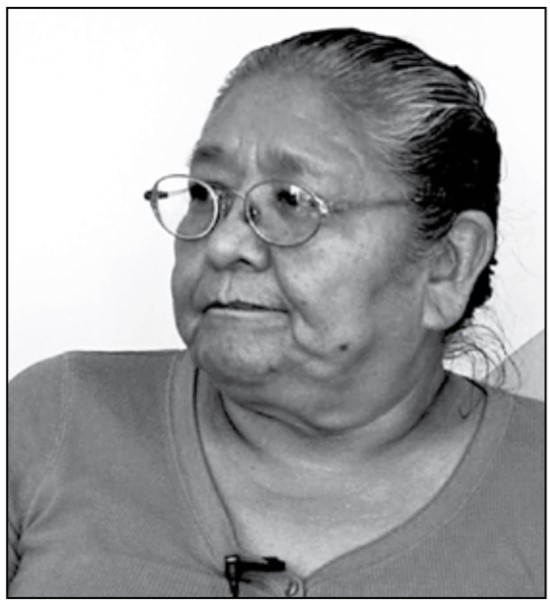Warning: Some of the details in this story may be disturbing to some readers. Discretion is advised.

When unmarked burial sites containing 215 bodies were discovered last week at the former Kamloops Indian Residential School in B.C., one survivor said he was “shocked but not surprised.”
“I’ve heard of this before. I’ve heard people talk about this, residential school survivors,” Saa Hiil Thut, who graduated from the school in 1968, told Global News.
Many former students of the Kamloops school have publicly told tales about their time there, and the poor conditions and abuse they had to deal with at the school, which operated from 1890 to 1978, according to documents from the Truth and Reconciliation Commission.
In general, this report did not specify which years the survivors attended the school.

“My time there, often it was lonely, we were hungry, we were afraid,” said Thut, who is a member of the St’át’imc First Nation in B.C.’s Interior.
“It was like a paramilitary existence where everything had to be just so. If it wasn’t, you’d be punished.”
Punishment at the school could be severe, according to one survivor. Geraldine Bob told the Truth and Reconciliation Commission about her experience at Kamloops:
“They would just start beating you and lose control and hurl you against the wall, throw you on the floor, kick you, punch you and just laid you; they couldn’t stop. You know, they were insane, yeah. And they were not able to control themselves at all.”

Another survivor, Julianna Alexander, told the Commission that she was punished for trying to talk to her brother:

Get daily National news
“Did I ever get a good pounding and licking, get over there, you can’t go over there, you can’t talk to him, you know. I said, ‘Yeah, but he’s my brother.’ You know it’s not any, anybody different, you know, you can’t talk to him, you can’t go over there, can’t sit with him, you know, so this was the beginning of our, our daily routine, I guess, you know, can’t talk, can’t see them, can’t anything. I knew he was there, I just, you know, and he knew I was there, too.”
Sarah McLeod, who also attended the Kamloops school, told the Commission that she was punished for bringing to school a miniature totem pole that a family member gave her as a birthday present. A nun told her to throw it out, she said.
“I looked at her. I said, ‘But that’s my birthday present.’ ‘No, that’s no good. That’s all devil you see in that totem pole. It’s all devil, can’t you see all the devil in there? You throw it away right now.’ And she made me throw it in the garbage, and it was, I didn’t know, I said to myself, ‘Oh, my gosh. All this time I was, I was hugging this devil?’”

Bernice Jacks told the Commission that staff at the school didn’t even call her by name, instead giving her a number: 39.
“I was called, ‘Hey, 39. Where’s 39? Yes, 39, come over here. Sit over here, 39.’ That was the way it was. And that’s … I say it just the way they said it. I was 39.”
She felt that this denied her personal identity, she said.
At the Kamloops school, students weren’t given warm clothes, Bob told the Commission.
“I just remember the numbing cold. And being outside in the playground and a lot of us would dig holes in the bank and get in and pull tumbleweeds in after us, to try to stay warm.”
Many survivors complained about the food.
“There was 74 cents a day in my time when I was at residential school. That was the budget for each student. 74 cents. How are you going to feed someone on 74 cents a day? The food was atrocious,” Thut said.
“Hunger was one of my shocks there.”
Alexander noted the difference between what the staff ate and what they gave the students.
“On their table they had beautiful food, and our table, we had slop,” she told the Commission. “I call it slop because we were made to eat burnt whatever it was, you know, and compared to what they had in their dining room. You know, they had all these silver plates, and beautiful glass stuff, and all these beautiful food and fruits and everything on there, and we didn’t even have that. And so I, I became a thief, if you want. You know I figured a way to get that food to those hungry kids in intermediates, even the high school girls, the older ones were being punished as well.”

Thut said that his experience at the school affected him for years.
“It caused many nightmares throughout my life until I found the healing road. Like literally nightmares in the night when I go to sleep.”
He said he’s grateful he found culturally appropriate help in order to heal.
“I suffered abuse at the residential school. Physical, mental and spiritual abuse there,” he said.
“To recover, it took me 14 years after I left. I became an addict and an alcoholic. So to finally face those events and get them out of my system was huge. My feelings today are for the ones that did not find the healing road.”
Anyone experiencing pain or distress as a result of their residential school experience can access this 24-hour, toll-free and confidential National Indian Residential School Crisis Line at 1-866-925-4419.


Comments